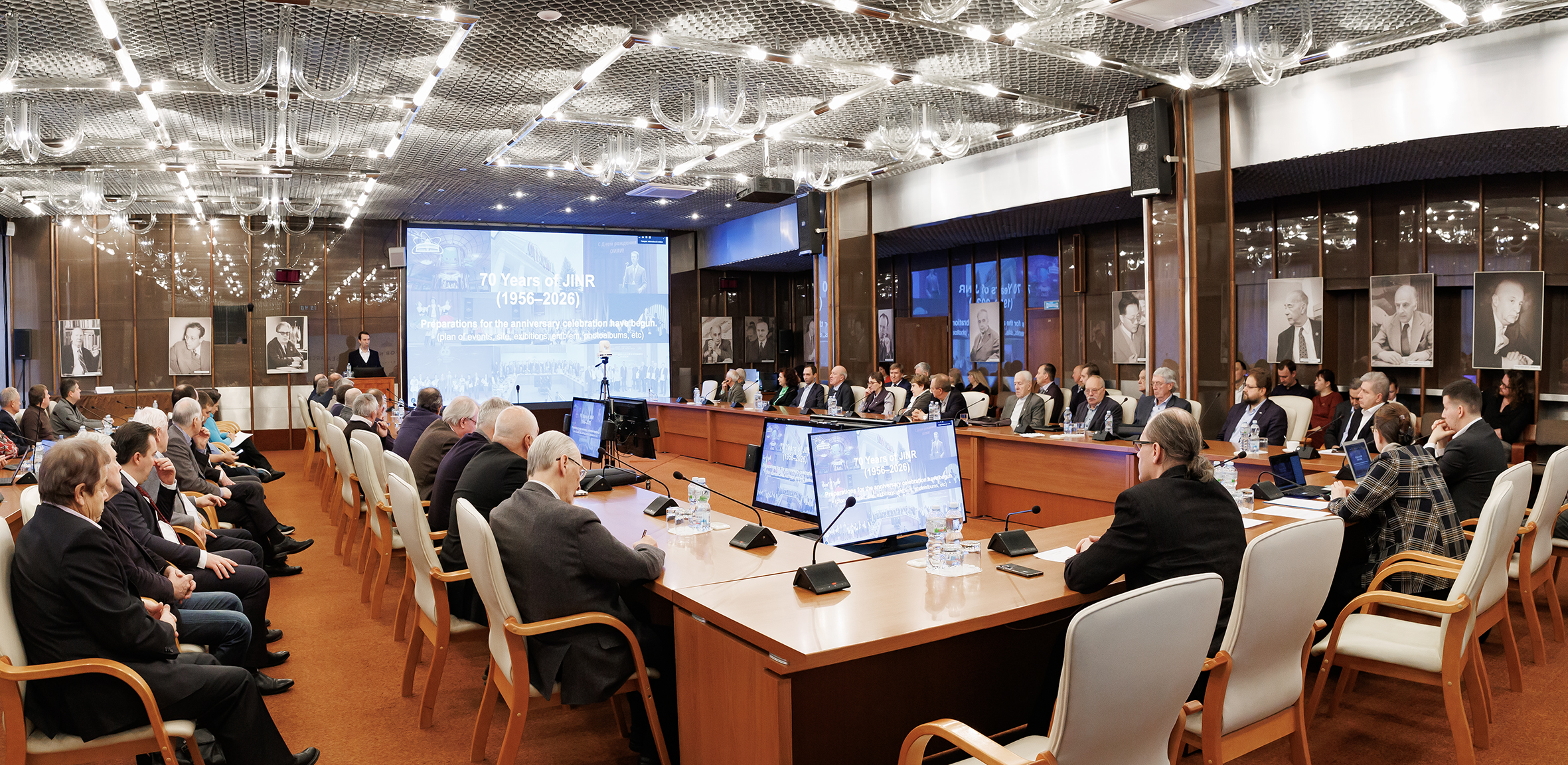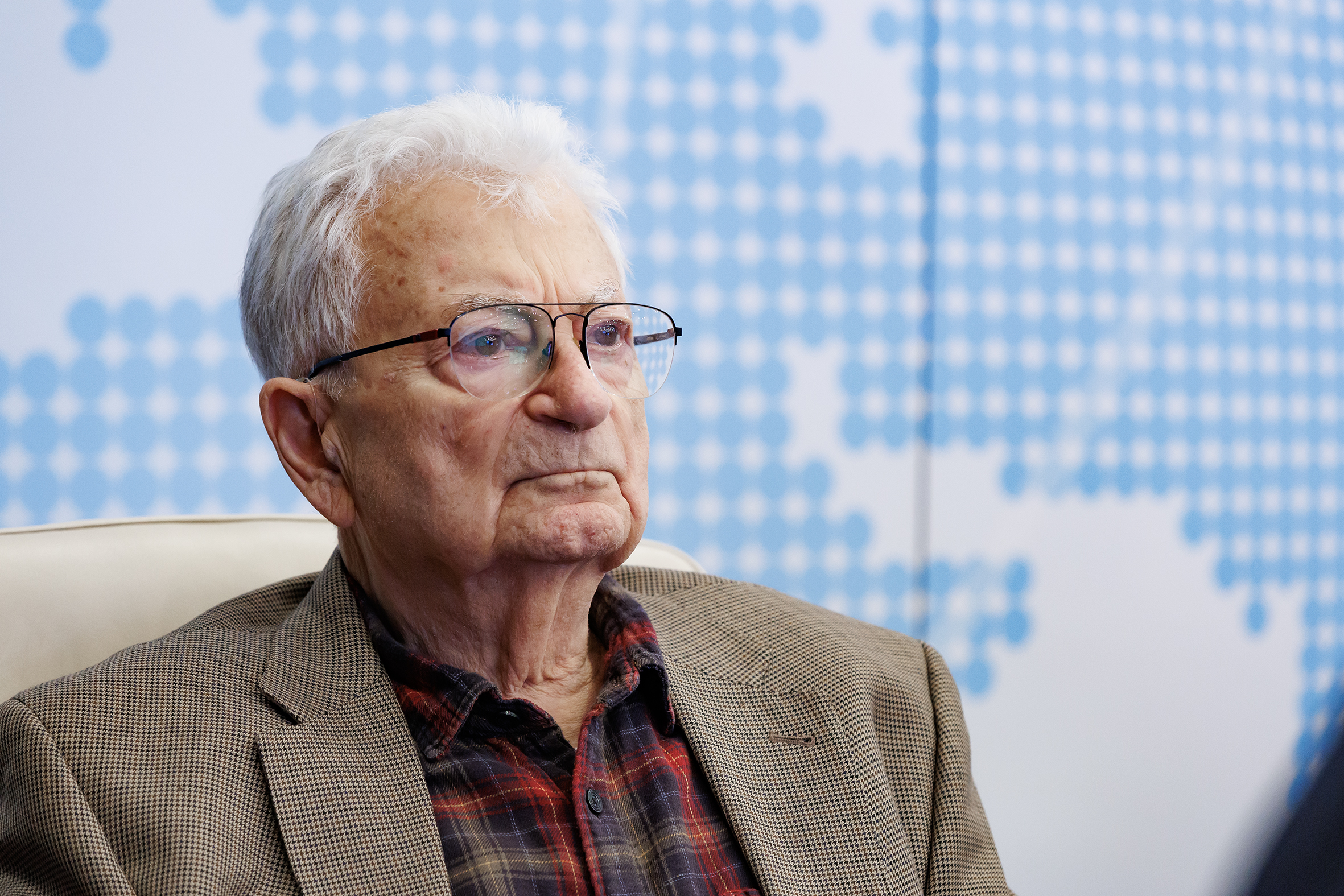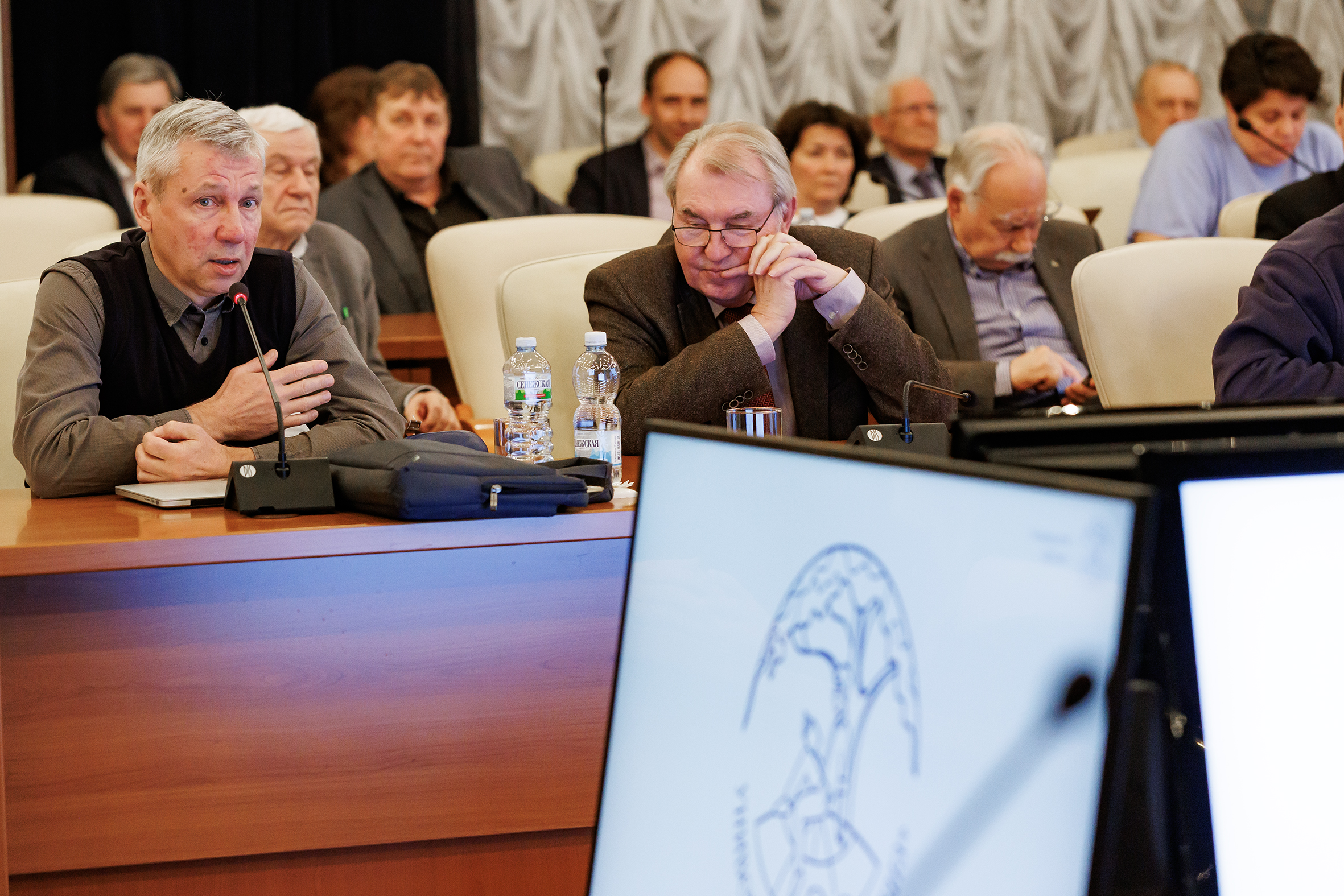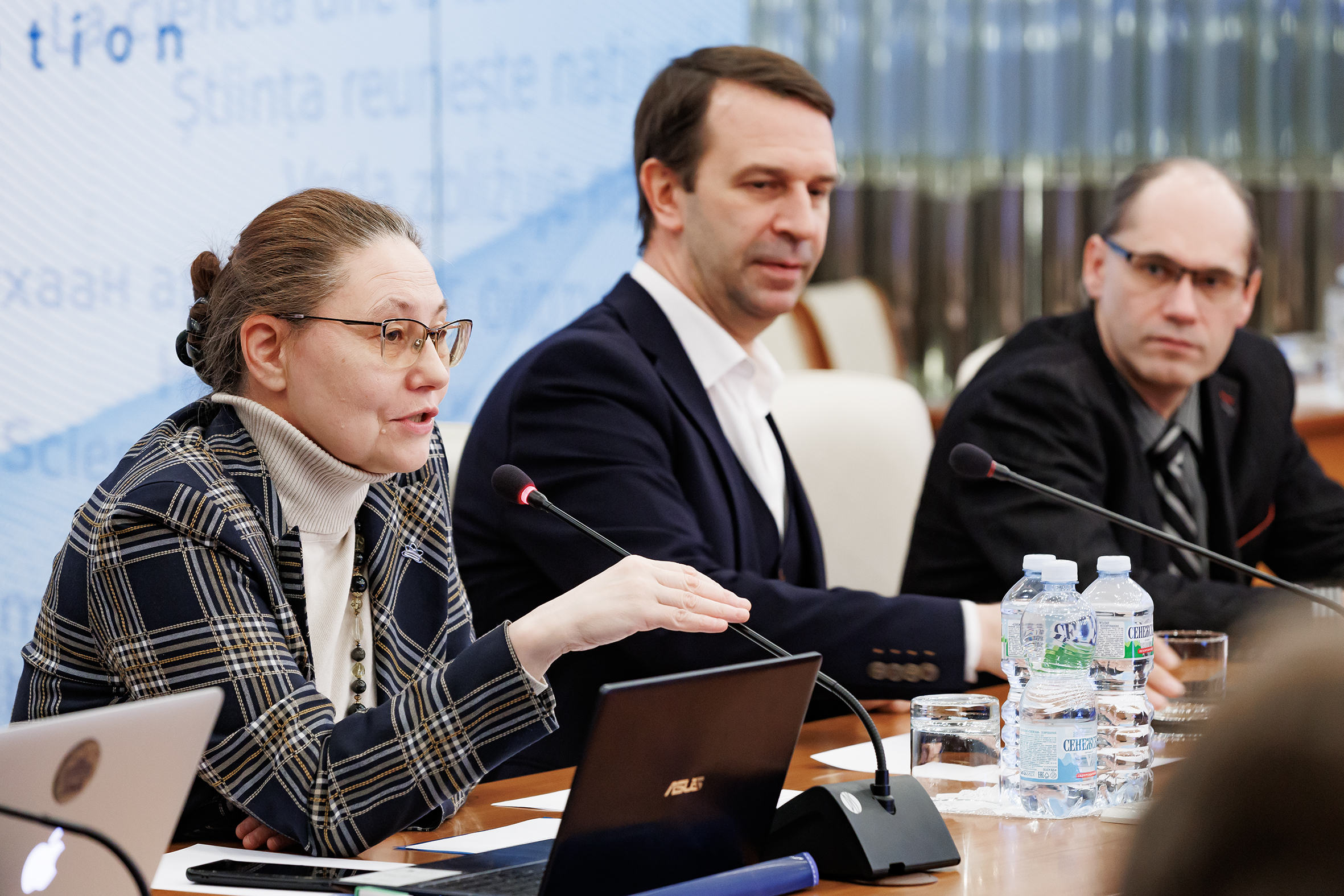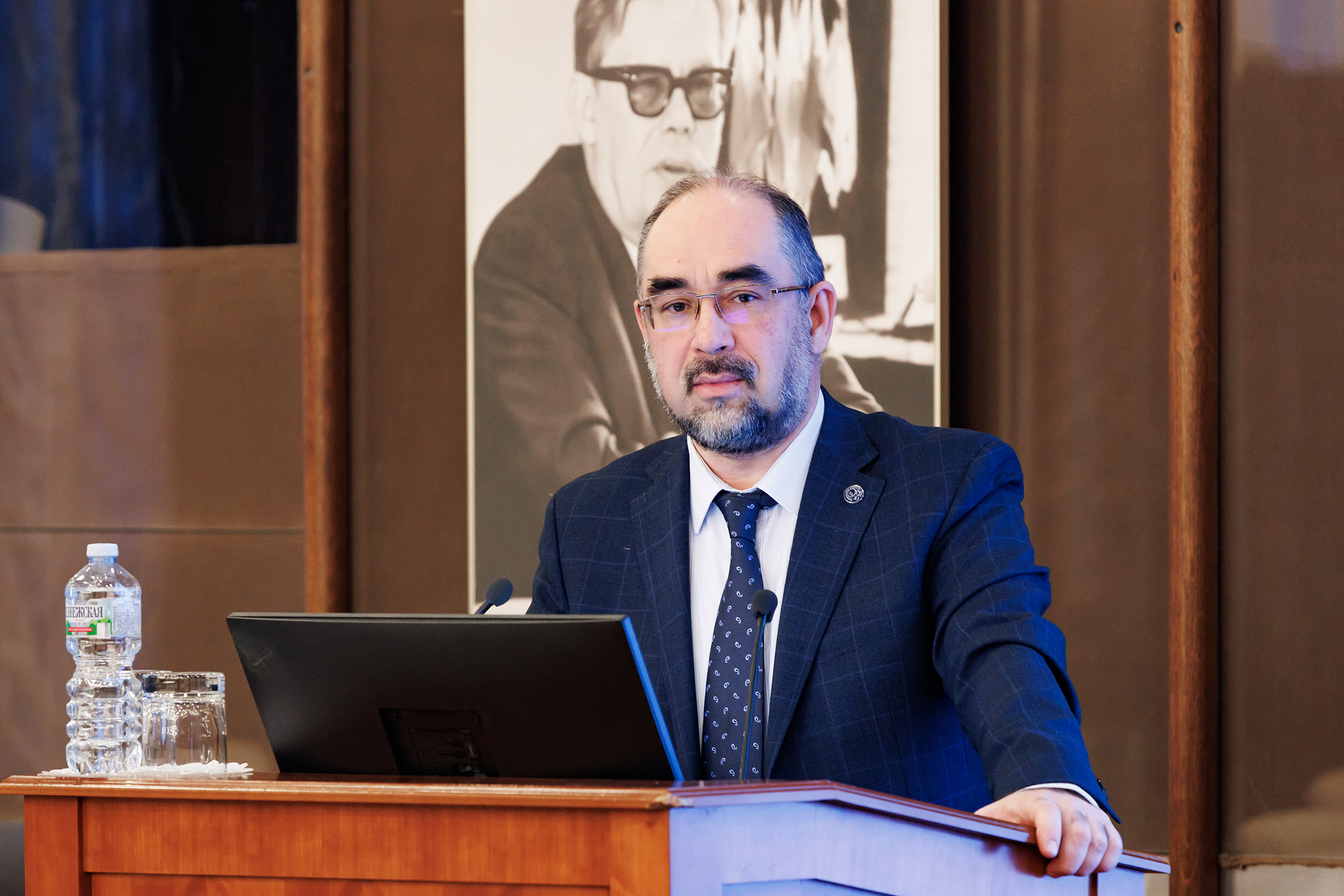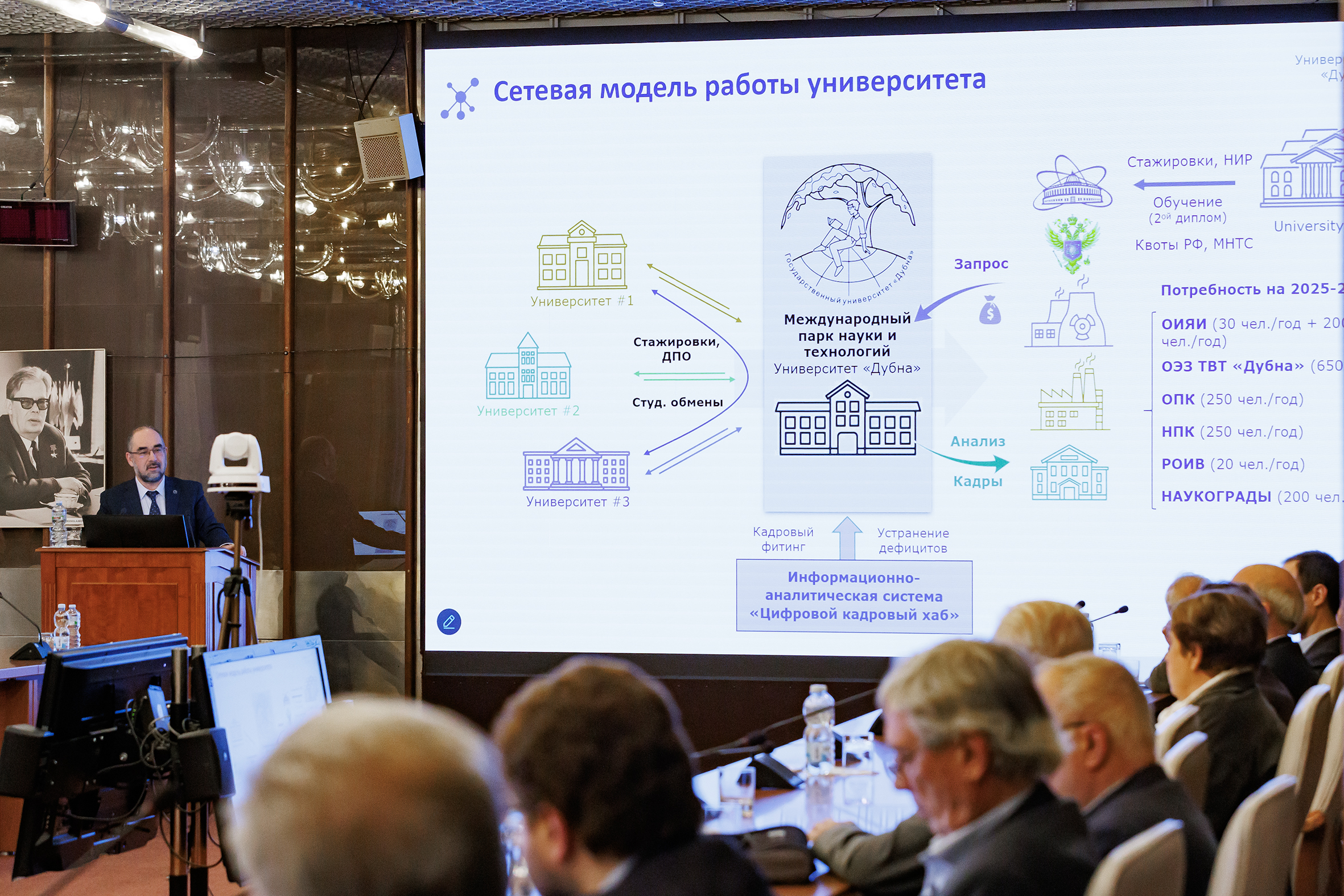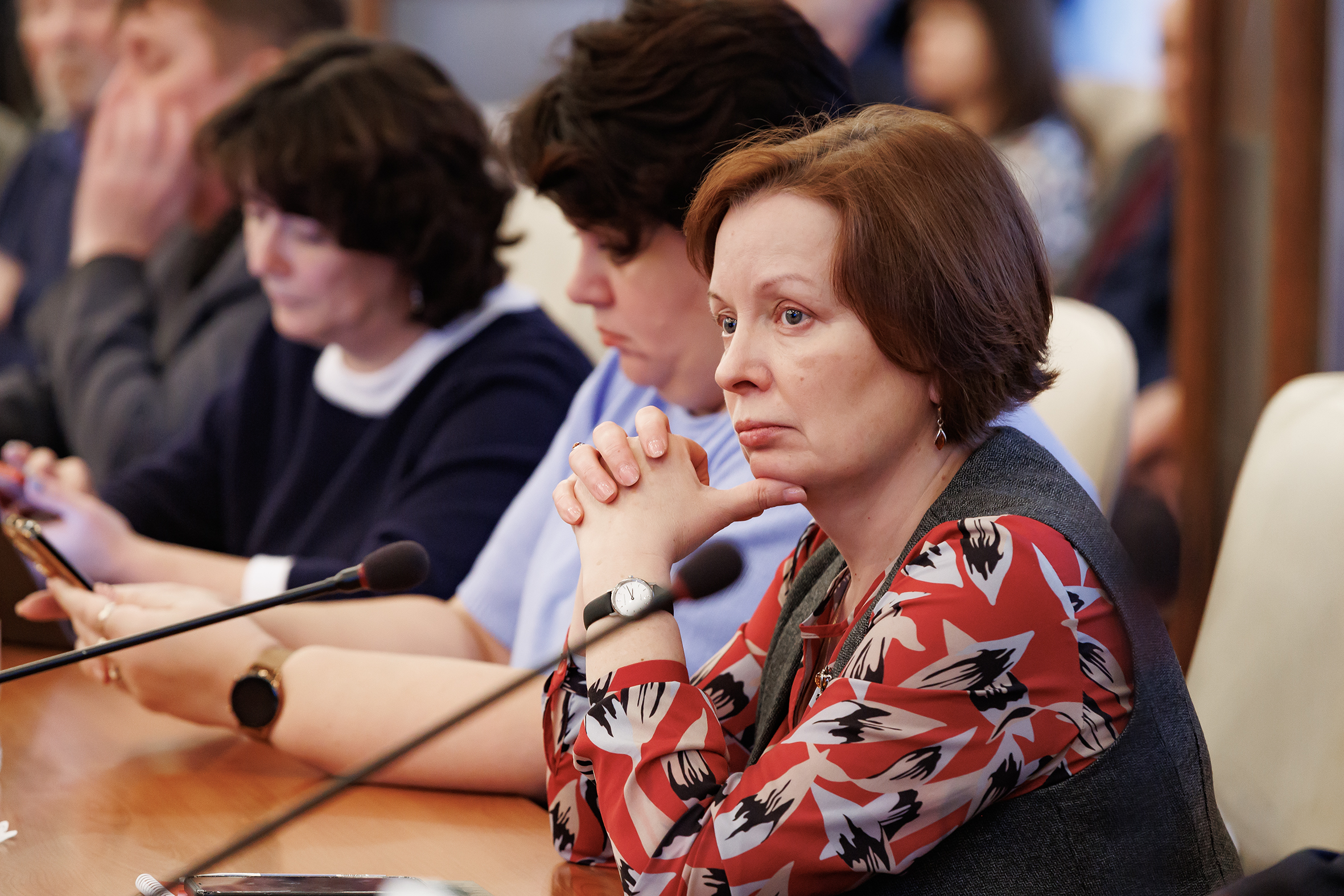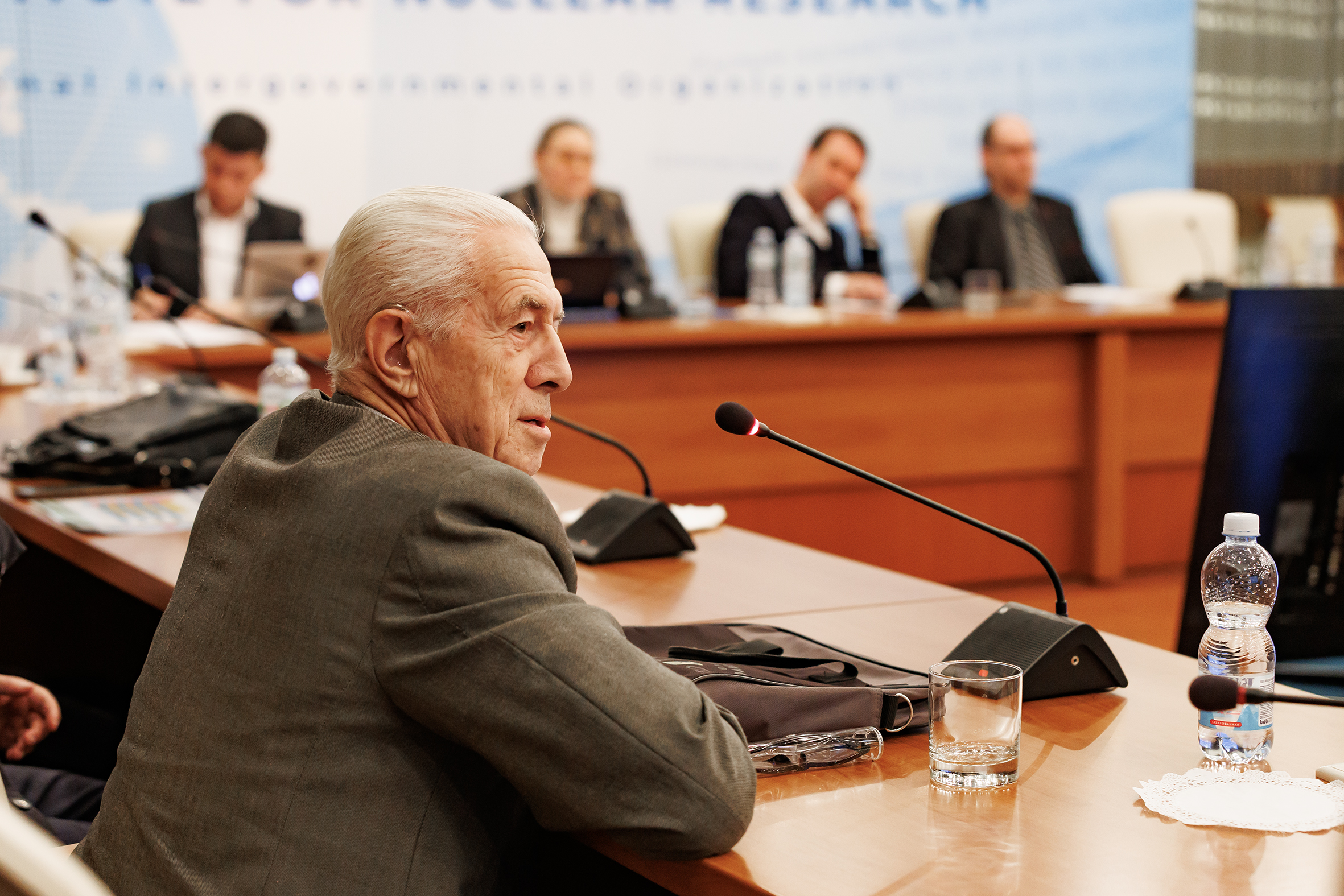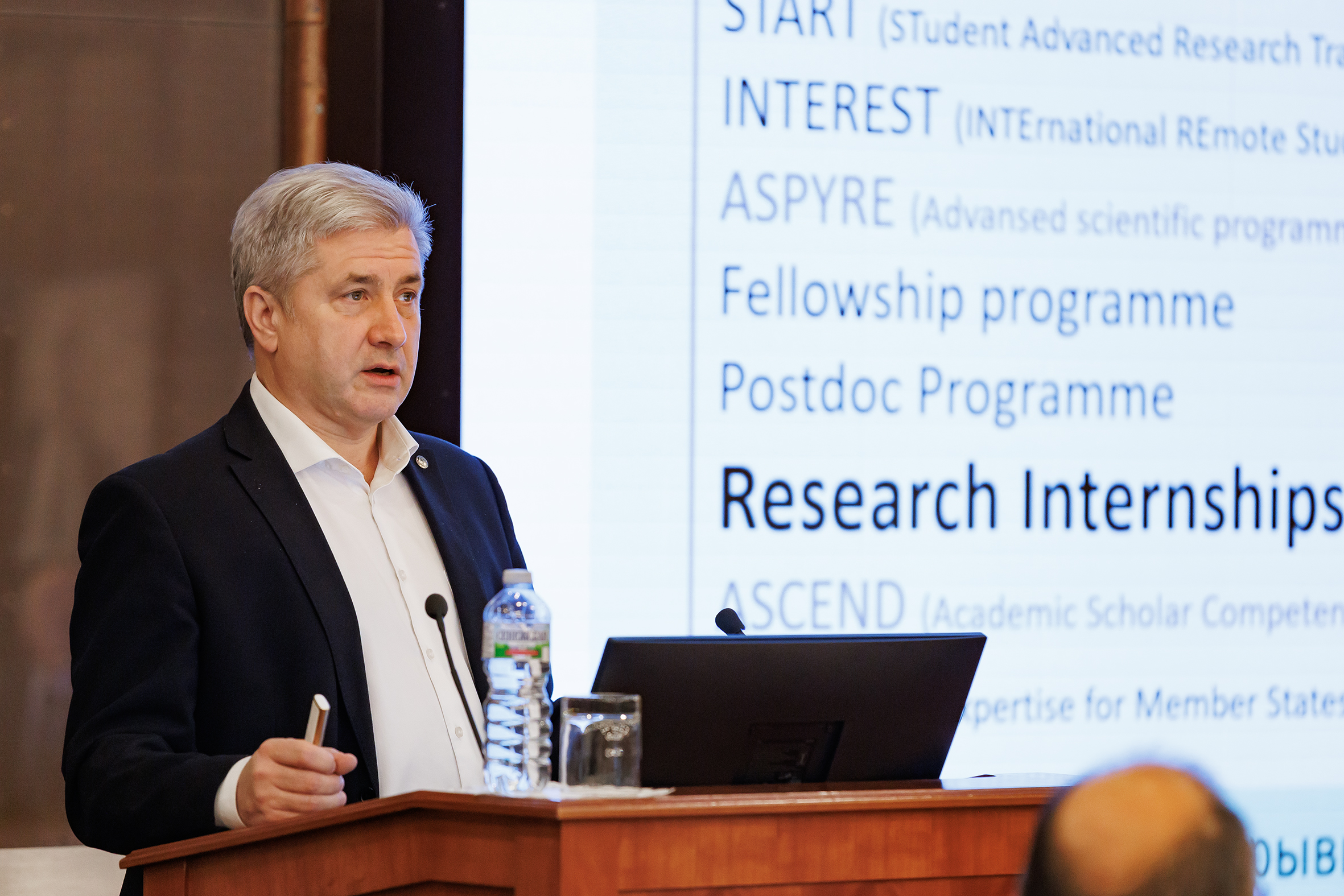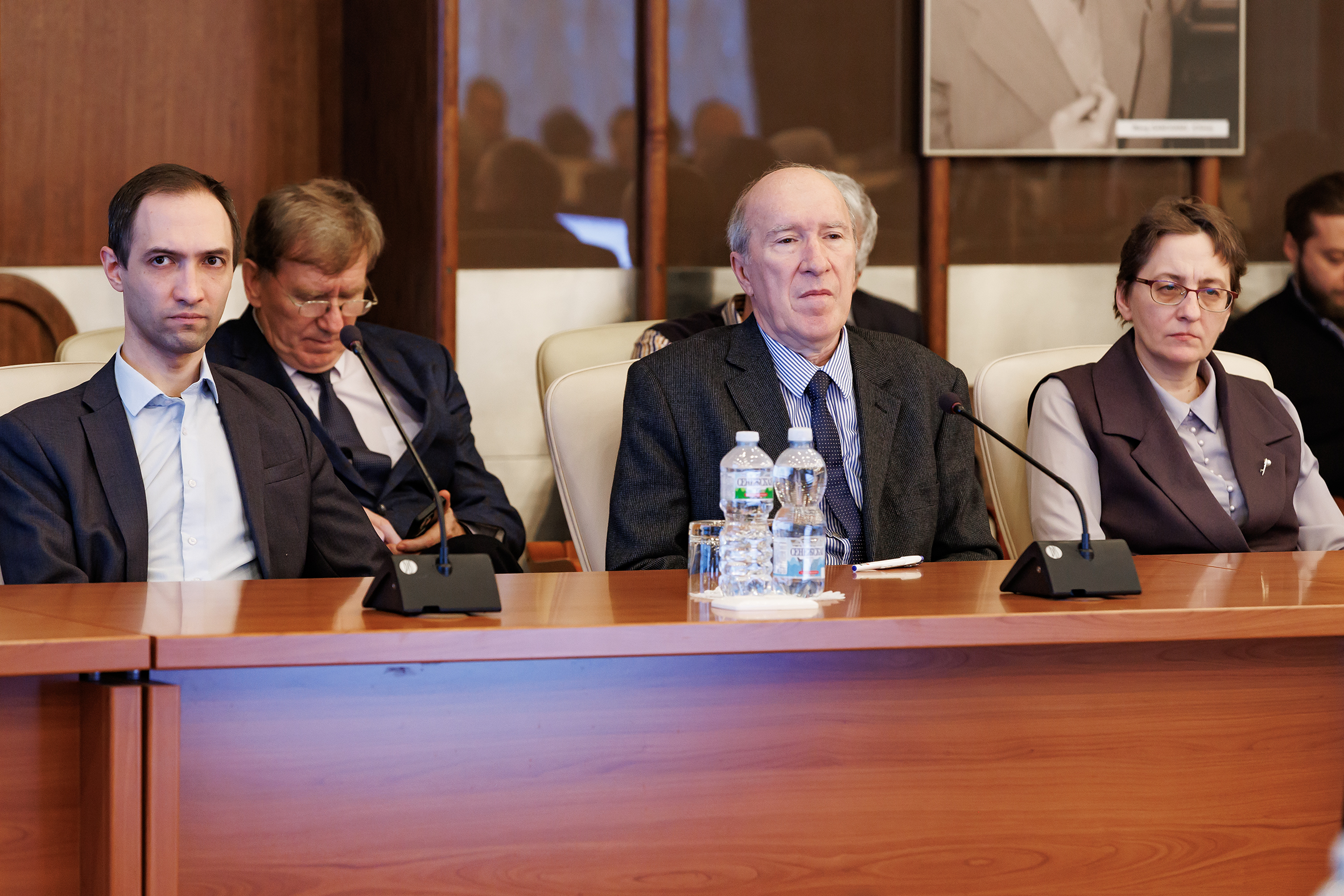JINR STC discussed developing higher education in Dubna and attracting scientific personnel
News, 09 December 2024
On 29 November, a meeting of the JINR Science and Technology Council (STC) took place at the JINR International Conference Centre. STC members discussed the task of attracting highly qualified scientific personnel to the Joint Institute.
The JINR Science and Technology Council Chair Elena Kolganova opened the event. Elena Kolganova outlined the session’s agenda: “Today’s meeting is devoted to the issues of education, particularly that provided at Dubna University, and the tasks of training, retraining, and attracting engineers and scientists to JINR.” STC members listened to talks on three key issues: JINR Director, Academician of the Russian Academy of Sciences Grigory Trubnikov presented the Institute’s current activities, Dubna State University Acting Rector Andrey Denikin spoke about the development of the university, and JINR University Centre Director Dmitry Kamanin discussed the programme of the UC activities.
Grigory Trubnikov noted that at DLNP, a new spectrometry cluster is ready to be used in performing measurements, a radiochemical laboratory has been repaired and is set to be launched in late 2024 – early 2025, and the commissioning run of the LINAC-200 Electron Accelerator is planned. The construction of the MSC-230 Medical Proton Cyclotron has started at the Efremov Institute of Electrophysical Apparatus. The Baikal-GVD Collaboration has published an article demonstrating that the galactic neutrino flux at energies above 200 TeV is much higher than predicted by modern models.
After a three-year break, the U-400M Cyclotron has been launched at FLNR. Construction and repair is nearing completion in the hall of the DC-140 Accelerator. In the second half of next year, the researchers plan to obtain the first accelerated ion beams.
At the meeting of the Supervisory Board of the NICA Project, the phased commissioning schedule of the VBLHEP accelerator complex was presented. Employees of four Institute’s laboratories take part in the equipment installation and other preparatory work. “I would like to use this podium to thank FLNR, DLNP, and FLNP for joining the installation work with a huge amount of equipment on the collider ring,” Grigory Trubnikov commented.
At MLIT, the PIN-2 Scientometric System is being put into trial operation. PIN-2 will include employees’ personal data and publication activity, thus serving as a repository of employee publications (electronic archive). It will be supplemented by document management services.
FLNP is completing work on the replacement of two air heat exchangers of the IBR-2 Research Reactor. Taking into account the re-examination by the Federal Service for Environmental, Technological, and Nuclear Supervision (Rostekhnadzor) and obtaining permission to start the reactor, the IBR-2 trial launch is postponed until about the middle of 2025. Today, the Institute’s team consists of more than 5,000 employees, almost 28% of the total number are scientists, 29% are engineering and technical workers.
The JINR Dissertation Councils are actively working: about thirty candidates and doctors of sciences defend their theses at the Institute every year.
Starting from 1 January 2025, the phased equalisation of the salary part of researchers’ remuneration will continue. Monthly additional payments to academic degrees’s holders will be increased. From 1 March, the fixed part of the salaries of cost centre employees will be indexed by 4%, and from 1 April, the fixed part of their salaries will increasy by 10,000 roubles.
Among the highlights of the last months of JINR’s life, the Director of the Institute noted the AYSS-2024 Conference, which brought together more than 260 young people from 17 countries. By the end of the year, the first issue of the JINR peer-reviewed Natural Science Review online journal will be published (the Chief Editor is JINR Scientific Leader Victor Matveev). “Our own scientific journal is an important project for the JINR infrastructure and reputation. For the successful development of the journal, it is necessary to combine the efforts of the entire Institute. We need to publish about 5-8 high-quality articles quarterly for a couple of years,” Grigory Trubnikov stressed, urging employees to submit more articles for publication.
In the coming months, the JINR Start-Ups innovation project competition will start at the Institute. It aims at implementing 5-10 small technological projects annually worth 2-4 million roubles each.
The JINR infrastructure facilities undergoing repairs include gyms, exhibition spaces, the Ratmino Dispensary, and the Dubna Resort House in Alushta. The restaurant of the Dubna Hotel will soon open its doors to visitors.
In autumn, elections to the Council of Deputies of the city district were held in Dubna. According to the results, five JINR representatives joined the city council. “We are actively involved in the life of the city. Now, together with other enterprises, we are developing the city’s master plan and its development strategy. Next year we will have to prove that Dubna truly is a science city,” Grigory Trubnikov said.
Part of the strategic plan of the city is the Dubna University campus, an International Science and Technology Park planned to be built on the site of the Dubna Special Economic Zone located on the left bank of Volga River. Acting Rector of Dubna State University Andrey Denikin provided further details regarding the project.
Andrey Denikin announced the expected results of the implementation of the International Science and Technology Park project in Dubna. It is planned to build a housing stock for temporary residence of up to 2600 students, teachers, and researchers. In addition, there will be an advanced competence centre for developing innovative technologies in artificial intelligence, nuclear physics, and space electronics.
“The park does not just involve the expansion of the university. This is a powerful project for the development of the city in terms of education, science, and industry. Upon implementation, the project is planned to generate more than 10 thousand high-technology jobs,” Andrey Denikin noted, emphasising that the park will contribute to the staffing of large national projects and the creation of new technologies, as well as the development of technological infrastructure in the city. After the implementation of the project in Dubna, the number of students may increase from 2,700 to about 4,500-5,000 people, ensuring an influx of qualified personnel to JINR and urban enterprises. During the implementation of the park, a sports complex with an indoor ice arena, bike paths, ski trails, and landscaped public spaces will be created for residents of Dubna.
The university currently offers 64 majors and 20 joint educational programmes with JINR and several more with universities in Russia and Uzbekistan. In total, there are 4,100 students at the university, including its branches in Dmitrov and Protvino. 82 regions of the Russian Federation are represented among them. The share of applicants from other countries who enrolled in 2022 was 3%. In the future it is planned to increase this figure to 15%. 80% of graduates work in their degree field. Only 22% of students have social and humanitarian majors, while most choose engineering and technology. More than 600 current JINR employees are Dubna University graduates.
The Dubna University Acting Rector spoke about the challenges facing the university in connection with the planned expansion of student enrolment and Dubna’s personnel shortage issue. The first one is to prepare educational programmes for the requests of the science city employers. Unfortunately, the university cannot respond instantly, as training specialists in new majors takes about seven years. However, university specialists can facilitate other universities they cooperate with to fulfil the personnel requests. Another task is to attract a larger number of applicants. This requires ensuring the recognisability of the university and showing to the widest possible audience the professional prospects that studying at Dubna University can provide for each student.
JINR University Centre Director Dmitry Kamanin presented the UC programme of activities. He spoke about the prospects for the development of the centre’s educational projects. UC holds scientific schools for schoolchildren, student internships, JEMS internships for administrative and technical personnel, programmes for young scientists and engineers. Starting with 2025, the number of schools for physics teachers will increase, with some held in English. In addition, scientific and practical seminars for teachers will take place at the JINR Information Centres. These projects correspond with the plans of the Government of the Russian Federation to improve the quality of teaching mathematics and natural sciences in schools. UC continues to work on introducing a set of textbooks and teachers’ handbooks for in-depth study of physics in grades 7-9 and is developing a similar set for senior classes entitled “Physics in High School. Engineers of the Future”. In addition, as part of the current JINR Seven-Year Plan, UC is creating a set of research laboratory works to include the results of the JINR research in radiobiology, nuclear physics, and condensed matter physics in the educational process at universities in Russia and JINR partner countries. A platform will be prepared for remote experiments in cooperation with universities in Bulgaria, Vietnam, Serbia, and South Africa. The UC staff will take part in creating a new JINR museum exhibition and increasing the number of exhibitions in partner countries.
Dmitry Kamanin voiced the expectations of the JINR laboratories from UC, including the synchronisation of curricula of the JINR-based departments in various leading universities of Russia, examinations required for the Candidate’s degree, postgraduate studies, assistance in opening the Radiochemistry Department at the Moscow State University branch in Dubna, qualified personnel training, occupational safety training, Russian language classes for employees, and other tasks.
JINR is currently working on a new University Centre regulation, prompted by the need for the UC Council to resume its activities in order to determine the University Centre development strategy. The range of the UC activities has expanded significantly since its establishment in 1993. The department is doing a lot of work not only to attract personnel to the Institute and interact with the JINR-based Departments in universities, but also to promote the JINR activities and popularise science in general, improve the quality of teaching natural sciences in schools, etc. The Council will include the Institute’s Director, the UC Director, representatives of the JINR Laboratories, heads of the JINR-based Departments, representatives of the Directorate and leadership of the Institute, heads of the Association of Young Scientists and Specialists and the JINR Council of National Groups. Simultaneously, a working group of the UC Council for urgent tasks should be established.
JINR STC members noted that the most important task of the UC in the next few years is to attract hundreds of researchers to work at the Institute. To accomplish the objective, UC will work closely with universities and the JINR Human Resources and Records Management Department.
